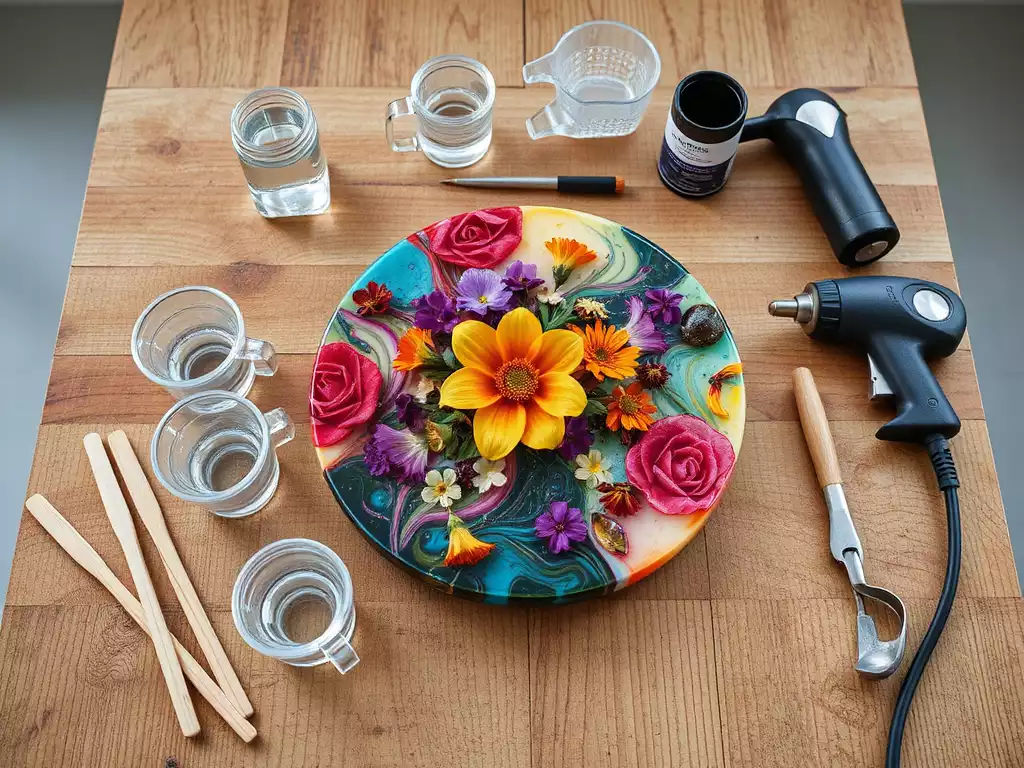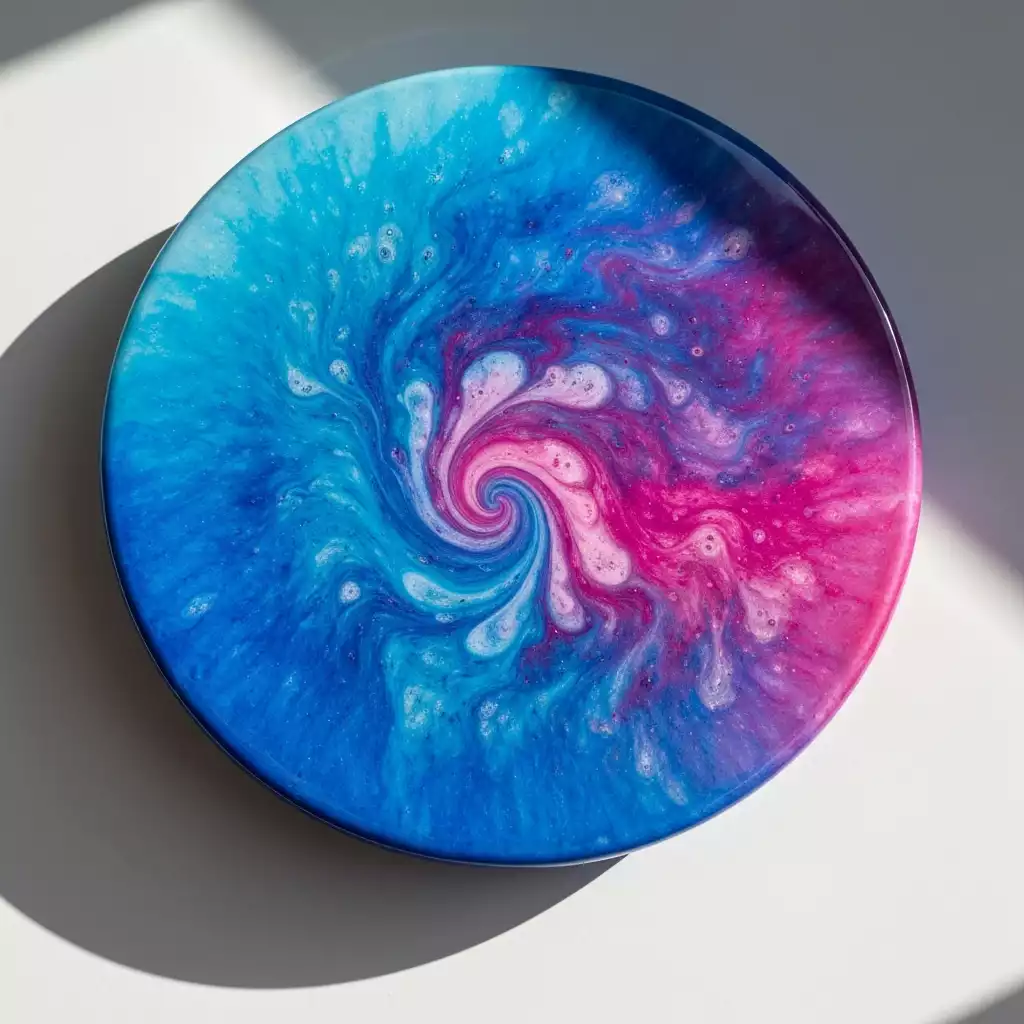The explosion of creativity in resin art has captivated countless artists and aspiring creators. As this medium grows in popularity, understanding its nuances can unlock your potential in this vibrant craft. Are you ready to dive into the dynamic world of resin art and explore its endless possibilities?
What You Will Learn
- Resin art combines various materials with resin for stunning, durable creations.
- Different resins (epoxy, polyester, UV) offer unique properties suited for various projects.
- Effective marketing strategies, such as utilizing social media and collaborating with influencers, can help promote your resin art business.
- Understanding market trends, such as sustainability and customization, is crucial for meeting consumer demands.
- Engaging with clients about customization fosters stronger relationships and customer satisfaction.
- Continued education through blogs and online courses can enhance your skills and keep you updated on industry trends.
Understanding the World of Resin Art
Welcome to the vibrant world of resin art! This fascinating medium has captured the hearts of many artists and hobbyists alike. But what exactly is resin art, and why is it becoming increasingly popular? Let’s dive into this engaging craft and explore its compelling aspects.
Resin art involves using a synthetic resin, typically epoxy or polyester, to create stunning, glossy artworks. Artists can pour, mold, or layer resin to achieve spectacular effects. From coasters and jewelry to wall art and sculptures, the possibilities are nearly endless, which adds to its allure. With the rise of social media platforms showcasing these artworks, more people are inspired to try their hand at creating unique pieces.
What Is Resin Art and Why Is It Popular?
At its core, resin art is a creative process that combines resin with various materials to produce beautiful and durable pieces. One reason for its popularity is the intense colors and mesmerizing effects that can be achieved through different techniques. Additionally, the accessibility of materials and tutorials online has made it easier for newcomers to jump in and start creating!
- Versatility: Resin can be used for a variety of projects.
- Vibrancy: Colors pop in ways that traditional mediums often can’t.
- Durability: Finished pieces are typically long-lasting and weather-resistant.
Moreover, resin art allows for a deep personal touch, as artists can incorporate items like dried flowers or photographs into their works. This personal connection to the pieces makes them even more special for both creators and buyers.
Exploring Different Types of Resin Used in Art
When starting out in resin art, it’s crucial to understand the different types of resins available. Each type has its unique properties and uses, which can greatly affect your creations. The two most popular resins are epoxy resin and polyester resin.
- Epoxy resin: Known for its strong bonding and crystal-clear finish, it is perfect for a variety of applications.
- Polyester resin: Usually less expensive, it cures faster and is often used for larger projects.
- UV resin: Cures quickly under ultraviolet light, making it ideal for small items and quick projects.
Choosing the right resin depends on your specific project needs. For example, if you’re looking for clarity and strength, epoxy is your best bet. For quicker results, you might prefer polyester. Understanding the properties of each type can help tailor your approach to resin art.
Understanding Epoxy Resin vs. Polyester Resin: What You Need to Know
Epoxy and polyester resins each have their advantages and drawbacks. Knowing these can guide you in selecting the right material for your projects. Let’s break it down!
| Feature | Epoxy Resin | Polyester Resin |
|---|---|---|
| Curing Time | Slower, takes several hours to cure | Faster, typically cures in 30-60 minutes |
| Finish | Clear, high-gloss finish | Can be glossy but often less clear |
| Durability | More durable, resistant to yellowing | Less durable, prone to yellowing over time |
Both options have their place in resin art, and it ultimately depends on your project goals. If you want a long-lasting piece, epoxy resin is likely the better choice, while polyester resin might be more suited for quick, temporary projects. For further insights into the chemical properties and applications of these materials, you can explore academic research on epoxy resin composites and their diverse uses.
Pro Tip
Did you know? Experimenting with different colors and layering techniques can take your resin art to the next level. Consider using transparent and opaque pigments together to create depth and intrigue in your pieces!
Steps to Establishing a Successful Resin Art Business
Starting your own resin art business can be an exciting journey! It allows you to express your creativity while also making a living doing something you love. However, like any business, it requires careful planning and effective strategies.
In this section, I’ll provide you with essential steps to help you build a thriving resin art business. From marketing strategies to understanding market trends, we’ll cover everything you need to know to get started!
Marketing Strategies for Promoting Your Resin Art
To attract customers and generate sales, you’ll need to implement effective marketing strategies. Here are some key tactics to consider:
- Utilizing Social Media: Share your work on platforms like Instagram and Pinterest, where visual content thrives.
- Building a Website: Create a professional website showcasing your portfolio, prices, and contact information.
- Engaging in Local Markets: Participate in craft fairs and local art shows to connect with your community.
- Collaborating with Influencers: Partner with social media influencers who can help promote your products.
By combining these strategies, you can boost your visibility and effectively reach your target audience. Remember, consistency in your marketing efforts is vital for long-term success!
Understanding the Market: Trends and Consumer Insights in Resin Art
To succeed in the resin art business, it’s crucial to understand current market trends and what consumers are looking for. Here are some insights:
- Sustainability: Eco-friendly resin options are becoming increasingly popular among consumers who value sustainability.
- Customization: Many buyers prefer personalized or custom pieces that reflect their individual style.
- Home Décor: Products like coasters, wall art, and table tops are in high demand as people look to enhance their living spaces.
By keeping up with these trends, you can tailor your offerings to meet customer preferences, ultimately increasing your chances of success! For a deeper understanding of market dynamics and consumer behavior in the art industry, insights from sources like The Arts Journal can be very beneficial.
Creating Custom Resin Art Products: What You Should Know
One way to stand out in the resin art market is by offering custom products. Here are some important considerations:
- Client Consultation: Engage with clients to understand their vision and preferences.
- Sample Approvals: Provide mock-ups or samples for client approval before starting the final piece.
- Timelines: Set clear expectations regarding creation timelines and delivery dates to ensure customer satisfaction.
- Pricing: Consider the time and materials involved when pricing custom pieces to ensure profitability.
By focusing on customization, you not only create unique products but also foster stronger relationships with your customers!
Frequently Asked Questions About Resin Art
What is resin art?
What are the main types of resin used in art?
How can I promote my resin art business?
What are current market trends in resin art?
Why is continuous learning important for resin artists?
Encouraging Artistic Growth Through Education and Resources
As you develop your resin art business, continuing education is vital for honing your skills and staying updated on industry trends. Here are a few resources to consider:
Recommended Blogs and Resources for Resin Art Enthusiasts
Staying informed can greatly enhance your skills and creativity. Here are some blogs and resources I recommend:
- The Resin Obsession: Comprehensive tutorials and tips for all skill levels.
- Resin Art Blog: Features innovative techniques and inspiration from fellow artists.
- ArtResin: Offers product information and project ideas that can help elevate your work.
Regularly checking these resources can provide fresh ideas and techniques to incorporate into your art! For those interested in the longevity and preservation of resin-based artworks, it’s worth exploring research on resin bleed and conservation efforts, which can inform your material choices for durable creations.
Online Courses and Workshops for Skill Enhancement in Resin Art Techniques
Investing in your education is key to growing your resin art business. Consider enrolling in online courses or workshops, like:
- Skillshare: Offers various courses on resin art techniques taught by experienced artists.
- Udemy: Features comprehensive classes tailored to different aspects of resin art.
- Local Art Studios: Check for workshops in your area that focus on resin art techniques.
These educational opportunities can help you master new skills and connect with other artists!
Final Thoughts and Ways to Engage with the Resin Art Community
Now that you have an understanding of how to establish a resin art business, it’s important to engage with the community. Building connections with other artists can lead to inspiration and collaboration!
Inviting Readers to Share Their Experiences and Projects
I’d love to hear about your experiences with resin art! Share your projects, tips, or challenges you’ve faced in creating your art. Engaging with each other can foster a supportive community where we all can grow.
Call to Action: Subscribe for More Resin Art Tips and Insights
If you found this information helpful, be sure to subscribe for more tips and insights on resin art. I’ll share valuable content that can help you on your creative journey!
Recap of Key Points
Here is a quick recap of the important points discussed in the article:
- Resin Art Overview: Involves using synthetic resin to create various art forms, including jewelry, wall art, and sculptures.
- Types of Resin: Understand the differences between epoxy, polyester, and UV resin to choose the right one for your projects.
- Marketing Strategies: Utilize social media, build a website, and engage in local markets to promote your resin art.
- Market Trends: Pay attention to consumer preferences for sustainability, customization, and home décor.
- Custom Products: Focus on client consultation, sample approvals, and clear pricing to enhance customer satisfaction.
- Continuous Learning: Engage with blogs, online courses, and workshops to enhance your skills and stay updated on trends.


